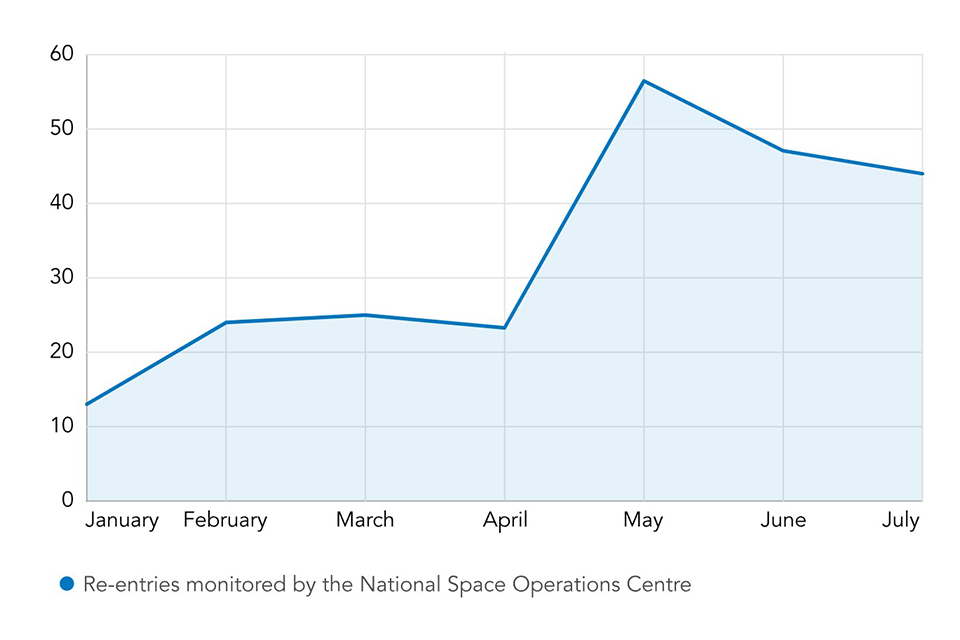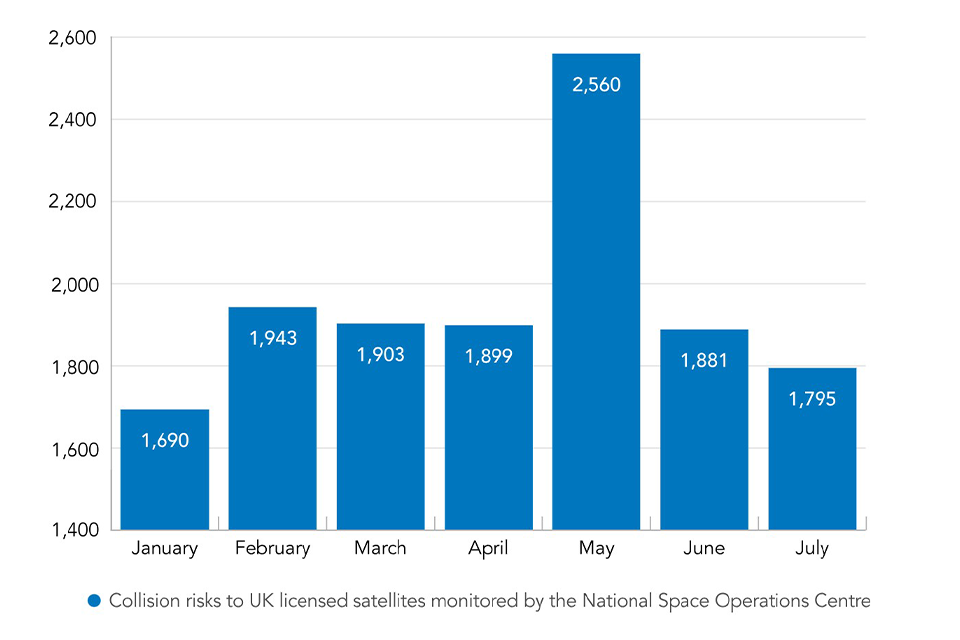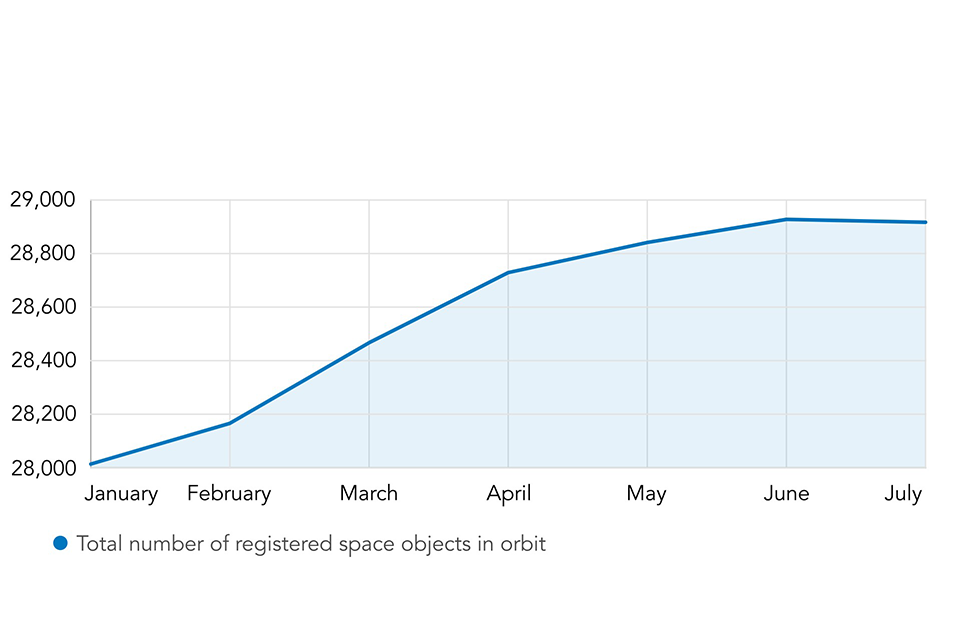How we protected the UK and space in July 2024
This report was issued in August 2024 and covers the time period 1 July 2024 to 31 July 2024 inclusive.

The National Space Operations Centre is led by the UK Space Agency and UK Space Command in partnership with the Met Office.
The National Space Operations Centre (NSpOC) protects UK interests in space and on Earth and works with international partners to ensure space remains safe, sustainable and accessible to all.
Summary
Overall risks to UK interests in space and on Earth from space-related threats, risks, and hazards were lower in July than in June with fewer re-entry, conjunction and space weather alerts issued. Whilst the number of re-entry events meeting the alert threshold reduced from a high in June, the number of re-entries monitored remained above average for 2024. All NSpOC warning and protection services functioned as expected throughout the period.
Uncontrolled Re-Entry Early Warning
We monitored 44 uncontrolled re-entries in July to protect the UK and UK Overseas Territories as well as support our international partners. This represents 8% fewer objects re-entering the Earth’s atmosphere in July than June, but this is still approximately 50% above average for the year – largely a result of the planned decommissioning of small communications satellites. We expect this above average trend to continue in August.

Chart showing number of re-entries monitored by month. January (13), February (24), March (25), April (22), May (56), June (48), July (44).
In-Space Collision Avoidance
We warned UK-licensed satellite operators of 1,795 potential collision risks in July. This represents a 5% decrease in risks over the previous month. Our warnings allow operators to take critical collision avoidance decisions.

Chart showing number of collision risks to UK licensed satellites monitored by month. January (1,690), February (1,943), March (1,903), April (1,899), May (2,560), June (1,881), July (1,795).
Fragmentation incidents
Reports indicated that a US satellite DMSP 5D-2 F8 fragmented on 19 July, generating 5 pieces of catalogued debris. Investigations suggest that the main body of the satellite may remain largely intact.
Space weather
The Met Office issued 27 critical space weather alerts in July. This represents a 58% decrease from June. Throughout the month, there have been some brief active spells, as expected for this point in the solar cycle. A quiet first week was followed by an increase in minor solar flaring through the second, with significant impacts unlikely to have occurred. A couple of low-level flares occurred during mid-month which may have given brief radio blackouts on the sunlit side of Earth, before a further quieter spell. Towards the end of the month, there was another increase in flaring, including another low-level flare and a minor radiation storm with satellite effects unlikely. Some weak CME arrivals gave a couple of minor geomagnetic storms, again with limited effects expected on satellite operations. Overall, this month has been less impactful on our infrastructure than the previous month.
Number of objects in space
There were 13 launches in July and a total increase in the US Satellite Catalogue of 143 registered space objects (RSOs). Of those launches, three were performed by SpaceX to deploy an additional 22 Starlink satellites. The remaining 121 RSOs were from previous months or new launches, ISS deployed satellites, or debris newly recorded in the US Satellite Catalogue.
Note that numbers in the registered space objects catalogue can fluctuate over time as data is continually verified.

Chart showing number of registered space objects by month. January (28,014), February (28,172), March (28,478), April (28,752), May (28,850), June (28,931), July (28,917).
Comments
The National Space Operations Centre combines and coordinates UK civil and military space domain awareness capabilities to enable operations, promote prosperity and protect UK interests in space and on Earth from space related threats, risks and hazards.